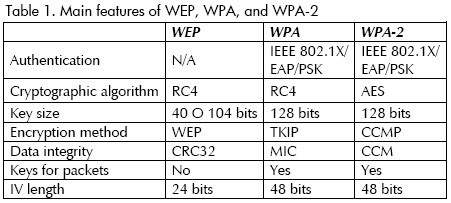


If ASCII characters are used, the 256-bit key is calculated by applying the PBKDF2 key derivation function to the passphrase, using the SSID as the salt and 4096 iterations of HMAC- SHA1. This pass-phrase-to-PSK mapping is nevertheless not binding, as Annex J is informative in the latest 802.11 standard. This key may be entered either as a string of 64 hexadecimal digits, or as a passphrase of 8 to 63 printable ASCII characters. Each wireless network device encrypts the network traffic by deriving its 128-bit encryption key from a 256-bit shared key. Target users (authentication key distribution) WPA-Personal Also referred to as WPA-PSK ( pre-shared key) mode, this is designed for home and small office networks and doesn't require an authentication server. ( July 2020)ĭifferent WPA versions and protection mechanisms can be distinguished based on the target end-user (according to the method of authentication key distribution), and the encryption protocol used.
#WLAN WEP VS WPA PSK UPDATE#
Please help update this article to reflect recent events or newly available information. Parts of this article (those related to SAE) need to be updated. The newer versions may not work with some older network cards. Wi-Fi devices certified since 2006 support both the WPA and WPA2 security protocols. Some of these devices support WPA only after applying firmware upgrades, which are not available for some legacy devices. WPA has been designed specifically to work with wireless hardware produced prior to the introduction of WPA protocol, which provides inadequate security through WEP.

Protection of management frames as specified in the IEEE 802.11w amendment is also enforced by the WPA3 specifications. The Wi-Fi Alliance also claims that WPA3 will mitigate security issues posed by weak passwords and simplify the process of setting up devices with no display interface. The WPA3 standard also replaces the pre-shared key (PSK) exchange with Simultaneous Authentication of Equals (SAE) exchange, a method originally introduced with IEEE 802.11s, resulting in a more secure initial key exchange in personal mode and forward secrecy. The new standard uses an equivalent 192-bit cryptographic strength in WPA3-Enterprise mode ( AES-256 in GCM mode with SHA-384 as HMAC), and still mandates the use of CCMP-128 ( AES-128 in CCM mode) as the minimum encryption algorithm in WPA3-Personal mode. In January 2018, the Wi-Fi Alliance announced WPA3 as a replacement to WPA2. From March 13, 2006, to June 30, 2020, WPA2 certification was mandatory for all new devices to bear the Wi-Fi trademark. In particular, it includes mandatory support for CCMP, an AES-based encryption mode. WPA2, which requires testing and certification by the Wi-Fi Alliance, implements the mandatory elements of IEEE 802.11i.
#WLAN WEP VS WPA PSK CODE#
Researchers have since discovered a flaw in WPA that relied on older weaknesses in WEP and the limitations of the message integrity code hash function, named Michael, to retrieve the keystream from short packets to use for re-injection and spoofing. TKIP is much stronger than a CRC, but not as strong as the algorithm used in WPA2. WPA uses a message integrity check algorithm called TKIP to verify the integrity of the packets. Well-tested message authentication codes existed to solve these problems, but they required too much computation to be used on old network cards. CRC's main flaw was that it did not provide a sufficiently strong data integrity guarantee for the packets it handled. This replaces the cyclic redundancy check (CRC) that was used by the WEP standard. WPA also includes a Message Integrity Check, which is designed to prevent an attacker from altering and resending data packets. TKIP employs a per-packet key, meaning that it dynamically generates a new 128-bit key for each packet and thus prevents the types of attacks that compromised WEP. WEP used a 64-bit or 128-bit encryption key that must be manually entered on wireless access points and devices and does not change. The WPA protocol implements the Temporal Key Integrity Protocol (TKIP). However, since the changes required in the wireless access points (APs) were more extensive than those needed on the network cards, most pre-2003 APs could not be upgraded to support WPA. WPA could be implemented through firmware upgrades on wireless network interface cards designed for WEP that began shipping as far back as 1999.
#WLAN WEP VS WPA PSK FULL#
The Wi-Fi Alliance intended WPA as an intermediate measure to take the place of WEP pending the availability of the full IEEE 802.11i standard.


 0 kommentar(er)
0 kommentar(er)
